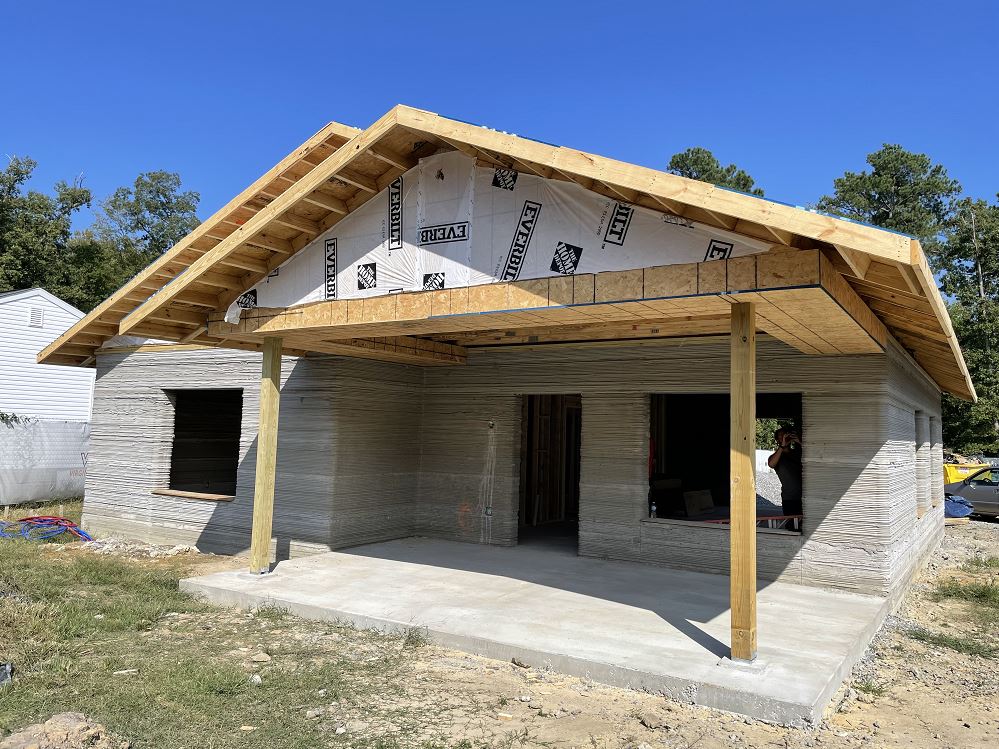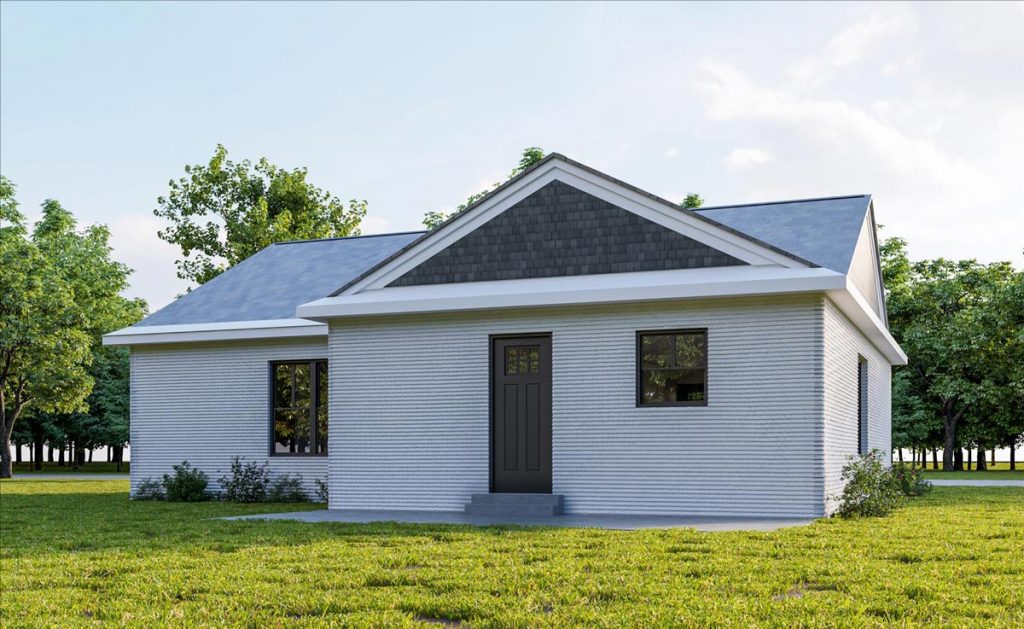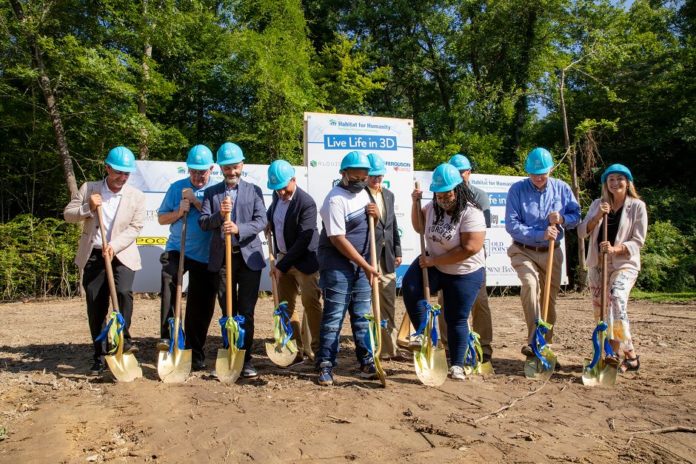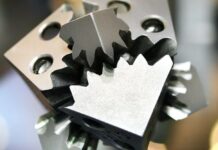On the heels of the first house COBOD 3D printed in the USA, the construction 3D printing company revealed the project conducted by customer and minority investor PERI Group for Habitat for Humanity.
The latter is a non-profit organization focused on long-term poverty alleviation through affordable social housing. PERI Group has 3D printed a 1,740 sq. ft. (160 m2) house in Tempe, Arizona for Habitat.
The organization is also involved in the latest housing-project 3D printed in Williamsburg, Virginia by Alquist3D. The house is 1,200 sq. ft. and will have 3 bedrooms and 2 full bathrooms.
The Williamsburg house is already the second project done in Virginia by Alquist3D since receiving the COBOD printer shortly before summer. In June, the company 3D printed the first house in the outskirts of Richmond in cooperation with Virginia Tech via a grant from Virginia Housing. The 1,550 sq. ft. (145 m2) house also contains 3 bedrooms and 2 bathrooms. Despite the house being located close to the large city of Richmond, Alquist3D is primarily targeting other demographics with the 3D printed offering.

Zachary Mannheimer, CEO of Alquist3D stated: “While most 3D printing endeavors focus on urban residential areas, many of the regions facing the biggest housing challenges exist in rural America. That is why we partnered with Virginia Housing and Virginia Tech to build homes for people who live outside of the places where most funding for housing programs is spent.”
Further south, COBOD’s first US customer, Printed Farms Florida, recently 3D printed its second building. This is the first 3D printed residential house made in Florida and is a 1,440 sq. ft. residential house located in Tallahassee, also containing 3 bedrooms and 2 bathrooms like the Virginia projects. Printed Farms completed the project in cooperation with Precision Building & Renovating LLC, which in turn funded the project through the City of Tallahassee Affordable Housing Construction Loan program.
The 3D printed concrete houses are not your average test structures – actual people will move in and benefit from them for a long time. “The finished product is far superior in strength, durability, and efficiency” stated James Light, COO & Co-founder of Precision Building & Renovating, while adding: “These homes are not only more efficient to construct, but they also carry less maintenance cost. Wood breaks and wood rots, especially here in the South.”

While executing the project, Printed Farms paid particular attention to how other non-concrete task could be solved more efficiently when 3D printing the walls. As examples, electricals and framings for windows and doors were intelligently put in place during the printing process.
Commenting on the success of the COBOD printers in the US, Henrik Lund-Nielsen, Founder & General Manager of COBOD International stated: “We are very delighted, that we and our growing US customer base despite COVID19 have been able to make significant progress and projects with our technology. Our printers have now printed buildings in 3 different US states, more than anybody else. As we have sold more 3D printers to new North American customers since, we expect to continue setting new records in the US, such that we become as prevalent on the North American market as we are in Europe with our printers and technology.”
Remember, you can post job opportunities in the AM Industry on 3D ADEPT Media free of charge or look for a job via our job board. Make sure to follow us on our social networks and subscribe to our weekly newsletter : Facebook, Twitter, LinkedIn & Instagram ! If you want to be featured in the next issue of our digital magazine or if you hear a story that needs to be heard, make sure you send it to contact@3dadept.com






